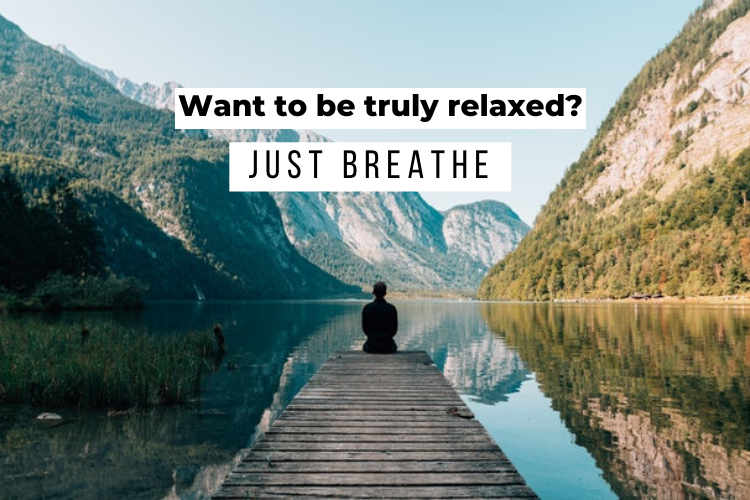Are you stressed out, tense, overextended or anxious? If the answer is yes, you are not alone. A recent Gallup poll found that almost 80% of Americans feel stress sometimes or frequently during the day. [1] The future of our nation, work demands, money, children, increased violence and crime are just a few of the situations causing stress and anxiety in our country today. However, studies emphasize the role of stress in causing chronic diseases by increasing chronic inflammation. [2] So, what simple practice will improve our health by reducing stress? Try resonant breathing. In fact, by slowing down your breathing, you will relax, reduce stress, improve your health and prevent chronic diseases.
What is resonant breathing?
Resonant breathing, also called coherent breathing, is slow breathing through the nose, about 5 breaths per minute. This translates to a count of 6 for each inhalation and exhalation. Normally we breathe about 15-18 breaths per minute. For instance, start where you are and work up to a count of 6 seconds for the inhale and 6 seconds for the exhale. It doesn’t take long to get up to a count of six with practice. Up to 30 minutes a day is excellent, but even 10 to 20 minutes can be beneficial. You can sit, stand, lie down, keep eyes open or closed. No one will know what you are doing.
The autonomic nervous system, the vagus nerve, and how they relate to resonant breathing
Review of the autonomic nervous system
The autonomic nervous system controls involuntary systems in the body, such as heartbeat and digestion. There are two divisions, the sympathetic nervous system (SNS). and the parasympathetic nervous system (PSNS)
The SNS is for fight or flight, the reaction to a dangerous or life-threatening situation. Breathing and heart rate increase, digestion decreases and glucose as the liver releases an energy source.
In contrast, PSNS is for rest and digest as the body relaxes to repair itself. Breathing and heart rate decrease, digestion increases and glucose is stored by the liver.
The SNS is activated in response to stress, both life-threating and not life-threating. However, the PSNS calms the body to return to a relaxed state.
Moreover, a balance of the SNS and PSNS leads to wellness and health of the body.
The vagus nerve and HRV (heart rate variability)
The vagus nerve is the longest of the 12 cranial nerves. It runs from the brain all the way through the diaphragm into the abdomen. It has many functions, but one is controlling the autonomic nervous system functions of internal organs, including the digestive system and the heart. Resonant breathing activates the vagus nerve. This slows the heart, and the rest of the autonomic nervous system will respond, leading to less stress and anxiety in the body.
Similarly, increasing the parasympathetic activity of the vagus nerve increases the connection of the heart and the brain, known as coherency. This allows the brain to keep in sync with the heart. Heart rate variability or HRV measures this balance of the PSNS and SNS. In contrast to the actual heart rate, HRV measures the variability between heartbeats. Increased variability indicates health and wellness of the body. In fact, resonant breathing increases HRV. [3]
Benefits of resonant breathing
When you learn the technique of resonant breathing, you can control your autonomic nervous system at will by your breath. First, breathing is the only bodily function controlled by the autonomic nervous system that is under our conscious control. As we breathe slowly and deeply, signals are sent to the brain to calm and relax the body and reduce stress. Once you master the technique, it can be done anytime and anywhere you feel the need to relax. When you feel stressed or overwhelmed, just begin the resonance breathing technique. Finally, you pause, take a step back, and deal with what is happening around you.
How can I learn the technique of resonant breathing?
I recommend The Breathing App. You can find it on Google Play or the App Store. It is very basic, but completely free. The settings allow you to adjust the length of time, the number of seconds for inhalation and exhalation, and then work up to the recommended count of 6 for each. It does not take long with a little practice. You can adjust the time from 1 to 30 minutes. There is a link to a YouTube Quick Start Video in the app to tell you everything you need to know.
I also use Insight Timer, which offers quite a bit of free content. Subscriptions are $59.99 per year with a free 7-day trial. The Calm app is very popular but has limited free content. Yearly subscriptions are also $59.99 with a 7-day free trial. But for simplicity of learning the resonant breathing technique for free, The Breathing App is the best to start with.
How has resonant breathing helped me?
I started using The Breathing App with settings of 4 seconds inhale and 4 seconds exhale for 5 minutes. After using The Breathing App for about two weeks, I easily do 20 minutes of 6 seconds inhale and 6 seconds exhale. This practice helps me get to sleep quickly. I can automatically breathe deeply during stressful situations, even without The Breathing App.
Conclusion
In summary, resonant breathing is a technique to relax the body by balancing the autonomic nervous system. Heart rate variability increases, and this restores the connection between the brain and the heart. The benefits are relaxation, reduced stress, reduced chronic inflammation, and better health and wellness. The results are amazing. Try it. Just breathe!



